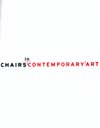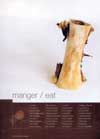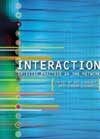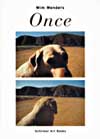|
|
|
Chairs in Contemporary Art
A particularly interesting catalogue produced in conjunction with an exhibition of the same name, sponsored by Promosedia, which was held at the Musei Civici del Castello in Udine as well as in other locations throughout the city center. The volume opens with a critical text on this history of the chair by Agnes Kohlmeyer, the curator of the show and director of the Kunstverein Museum in Ludwigsburg. Following this is the photographic documentation of chairs made especially for the event by invited artists, among them Carlo Bach, Letizia Cariello, Loris Cecchini, Chen Zhen, Emilio Fantin, Joseph Kosuth, Sarah Lucas, and Erwin Wurm.
Agnes Kohlmeyer, Chairs in Contemporary Art, Promosedia (Via Trieste 9/6, Manzano, Udine), 2001, 185 pages, 17 x 23 cm.
|

|
Manger/eat
This is an elegant, limited-edition publication of only 2,000 copies. It is part of a project that will eventually consist of eight different volumes, each one dedicated to a particular activity in every human being’s existence: sleeping, eating, sitting, working, moving, talking, having fun, being bored, and making love. manger / eat is the second part of this project and comprises a collection of many works by internationally famous artists that focus on this particular theme. For example, Nan Goldin’s photographs illustrate the activity of feeding through the act of a mother nursing her infant; the French artist Eric Poitevin immortalizes the remains of bones with the meat chewed off; the Algerian Lise Sarfati concentrates on the processing of animal guts in order to produce mincemeat. Eating is also symbolized by the cherries photographed by Uta Barth, by the trays and tables laden with different kinds of food by Stephen Shore, by the restaurant and bar signs by William Eggleston, by Wolfgang Tillmans’ “still-lifes” of common foodstuffs, and by Sam Samore’s blurry close-ups of people eating, drinking, and chewing.
manger / eat, coromandel design (2, Rue de l’Oratoire, Paris), 2001, 228 pages, 24 x 29.5 cm.
|

|
Interaction
This book is fruit of an online debate and exchange of ideas—launched back in 1998 by the American non-profit organization Eyebeam Atelier—between a number of internationally famous artists, academics, critics, architects, researchers, and curators regarding the cultural developments and changes to have taken place due to the widespread diffusion of the web. Particularly central to the discussion were the implications of this phenomenon on the development and practice of contemporary art. The book includes reproductions of various projects by artists such as Ken Goldberg, Ursula Bienann, Ricardo Basbaum, Jodi.org, Bracha Lichtenberg-Ettinger, Critical Art Ensemble, Knowbotic Research, Keller Easterling, and Eve Anurée Laramée. Eyebeam Atelier also organized another forum, from July 7 through August 4, entitled OPEN-SOURCE ARCHITECTURE, the_future_art_space. This time the discussion, enlivened by the participation of artists, architects, critics, and curators, was focused on the convergence of multimedia art and architectonic space.
Interaction: Artistic Practice in the Network, Eyebeam Atelier and D.A.P. (115 Mercer St., 3rd fl., New York, www.eyebeam.org), 2001, 168 pages, 15 x 20 cm.
|

|
Libro d’artista
This is the catalogue published in conjunction with the exhibiton The Artist’s Book, curated by Giancarlo Papi and held at the Biblioteca Malatestiana in Cesena. It recounts the history of the book, which has been used by artists as an object of aesthetic expression from Futurism until today. A large group of works, with incredible variations among them, remind us that the book is not only a vehicle for words and images, but is also a crafted item, itself possessing of the physical expression of skill that uses a wide variety of materials. Texts are by Guido D’Agostino, George Mancini, Francisco Cipriano, Luciano Caruso, and Cristiana Tafuri.
Libro d’artista. Rassegna internazionale del libro d’artista, Il Quartiere Edizioni (Via Argine 831, Naples), 2001, 47 pages, 20 x 20 cm.
|

|
Wim Wenders. Once
“Once” is how Wim Wenders starts all of the autobiographical tales in this volume, which are also accompanied by numerous snapshots. It is truly a visual diary of the various trips and adventures, both personal and professional, of this German film director. Just as in one of his movies, the poetry of the images and the emotion of the words blend together. The appearance of various directors and friends of Wenders’ are fascinating, such as Nicholas Ray immortalized during a Yankees game, Martin Scorsese seen in his car in Monument Valley, Jean-Luc Godard captured in San Diego, and the writer Peter Handke, pictured in New York while working on his novel The Long Way Around.
Wim Wenders, Once. Pictures and Stories, Schirmer/Mosel Verlag (Widenmayerstrasse 16, Munich, www.schirmer-mosel.com), 2001, 272 pages, 15 x 20.5 cm.
|

|
|
|
|